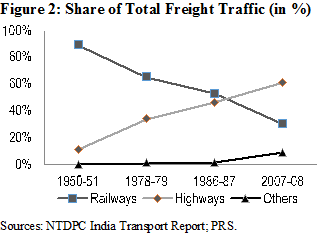No other railway is a match:
- The Indian Railways (IR) is a behemoth employing 1.3 million workmen, lifting more than 1 billion tonnes of freight annually and carrying 24 million passengers in its 12,000 passenger trains each day.
- Only a few railway systems in the world match or outdo these indices, but one factor that no other railway had matched was that the Indian Railways had its own budget - to be presented every year on the floor of the Parliament.
- At least this was the case until last year. 2017 will go down in history as the first year when the Rail Budget was subsumed in the General Budget.
Why a separate rail budget?
- It has its genesis in the recommendations of the Acworth Committee of 1920. A ‘separation convention’ on September, 1924 dissociated the railway finances from the general finances.
- In 1947, when independence was achieved, railway revenues were still 6% more than the general revenue. The Railway Convention Committee headed by Gopalaswamy Ayyangar recommended, “separation of Railway finances from General finance should continue”.
- This was considered necessary because the railway’s revenues far outstripped the general revenue and had the potential of masking small yet important aberrations in the general budget of the Government of India, if presented together.
- The separation of the Budgets was done to ensure that the central government receives an assured contribution from the Railways revenues. However, in the last few years, Railways’ finances have deteriorated and it has been struggling to generate enough surplus to invest in improving its infrastructure.
How Railways ministry was different from others?
- Indian Railways is primarily financed through budgetary support from the central government, its own internal resources (freight and passenger revenue, leasing of railway land, etc.), and external resources (market borrowings, PPP, joint ventures etc.,).
- Every year, all ministries, except Railways, get support from the central government based on their estimated revenue and expenditure for the year. The Railways Ministry is provided with a gross budgetary support from the central government in order to expand its network.
- However, unlike other Ministries, Railways pays a return on this investment every year, known as dividend. The rate of this dividend is currently at around 5%, and also includes the interest on government budgetary support received in the previous years.
- Various Committees have observed that the system of receiving support from the government and then paying back dividend is counter-productive.
- It was recommended that the practice of paying dividend can be avoided until the financial health of Railways improves. In the announcement made recently, the requirement to pay dividend to the central government has been removed.
- This would save the Ministry from the liability of paying around Rs 9,700 crore as dividend to the central government every year. However, Railways will continue to get gross budgetary support from the central government.
Could the IR have avoided this fate?
- By the 1970s the size of rail revenues had shrunk and was about 30% the size of general revenues. By 2015-16 it was down to 11.5%.
- Railways also has several social obligations such as: (i) providing certain passenger and coaching services at below cost fares, (ii) running uneconomic branch lines (connectivity to remote areas), and (iii) granting concessions to various categories of people (like senior citizens, children, etc.). All these add up to about Rs 30,000 crore.
- Other inelastic expenses of Railways include pension charges, fuel expenses, lease payments, etc. Such expenses do not leave any financial room for the Railways to make any infrastructure investments.
- Many erudite scholars of economics like Swaminathan S.A.Aiyar and Bibek Debroy were now raising the pitch for discontinuance of the rail budget.
- Indian Railways (IR) erred on two facets of its philosophy for growth.
- Its penchant for subsidising the passenger fares from artificially jacked up freight rates. The non-AC fares have remained static for the past 12 years; Freight rates now are at such high levels that road hauliers successfully compete with railways on grounds of being cheaper. It is not surprising that the rail share in the overall freight kitty is down from 89% in 1950-51 to less than 30% in 2014-15.
- Secondly, the railways themselves have been withdrawing from their core areas of operations and concentrating on peripheral items. They have withdrawn themselves from all urban transport activities.

Is a retrieval from this quagmire feasible?
- A return to the halcyon days of having a separate budget seems implausible. But, a retrieval of the railways’ financial health is quite within reach, if due focus is laid on the core sectors of freight operation and enhanced productivity of assets.
Concluding remarks:
- It will be harsh to contend that a separate rail budget has not served the country well. In 1947, the same administration controlled the areas in the present day Pakistan and Bangladesh.
- Look at the fate of those rail systems today and compare it with Indian Railways. It was a separate budget which kept IR on a graph of growth throughout.
- However, it remains to be seen whether merging the Railway Budget with the Union Budget will improve the transporter’s finances or if it would require bringing in more reforms.
Category: Mains | GS – III | Economy
Source: The Hindu & the PRS Blog
